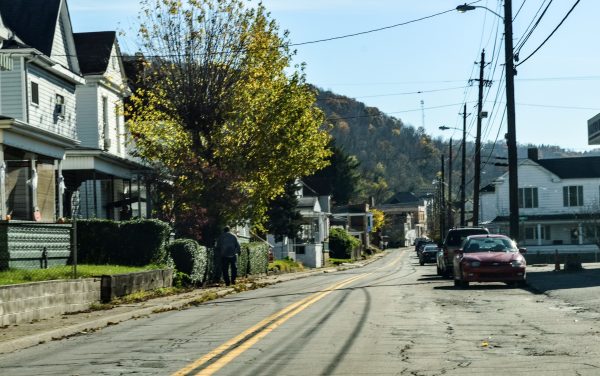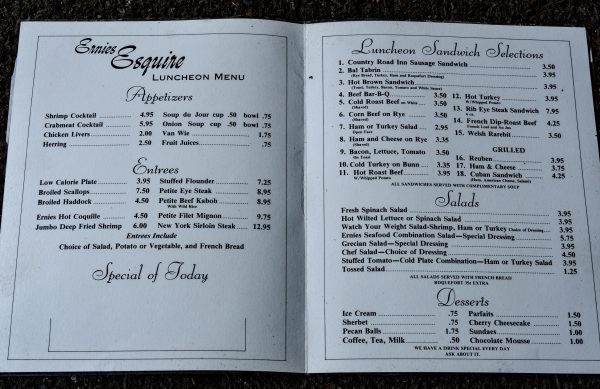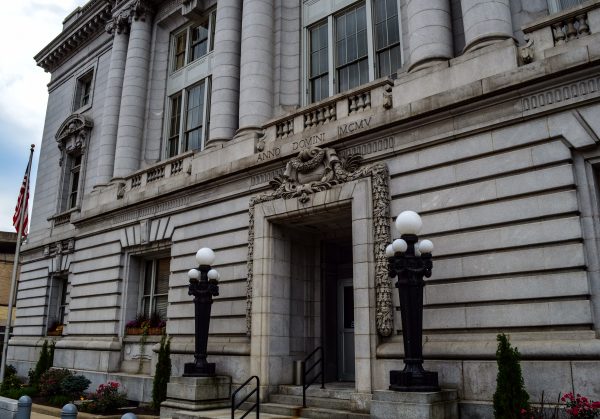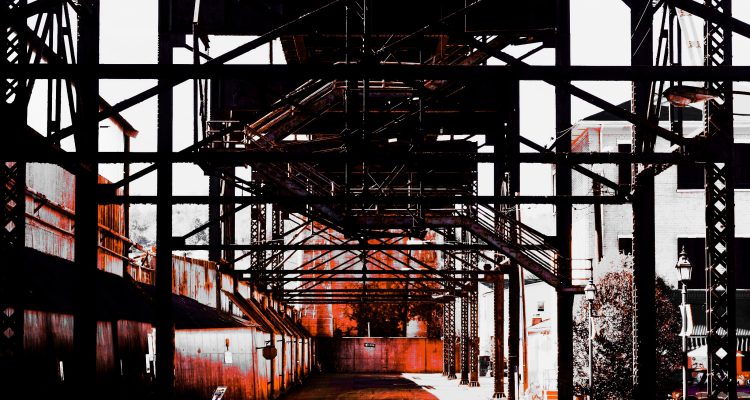(Editor’s Note: This is the 11th story in this series that has concentrated on the organized-crime scene in and around Wheeling during the past century.)
More Than One Mobster
There was a silent scattering that took place involving anyone even remotely connected to “Pauly No Legs” once the kingpin copped a plea and went to federal prison. The mobster’s racket was extensive and included crimes connected to prostitution, stolen goods, drug trafficking, gambling, and murder.
Paul Hankish’s cover was thick, and his local influence swelled more as the years of crime strode by. Hankish lived in Wheeling when not in prison, and the same was true for the majority of his key crew members, but his reach extended far beyond the 15 square miles that make up the Friendly City. Hankish was something of a folk hero in the Upper Ohio Valley and something of a superhero to gangsters from New York to Newark to Miami because he seemed un-killable after surviving a car explosion in January 1964 that sent his Studebaker’s front bumper completely over a neighbor’s house. Someone wanted him dead; Bill Lias was questioned and denied any involvement; the “who-done-it” case has never been solved.
Lias died six years later, and once Hankish was released from prison again, he assumed control over what he could and then expanded quickly. Poker machines, tucked-away and in-your-face brothels, unlicensed juke boxes, hijacked trucks, spot sheets, Quaaludes, jewel robbery, marijuana, and then the coke. His most prominent mistakes, former investigators have reported, were his addictions to cocaine and to hookers. The drugs were his bait, retired FBI agent Tom Burgoyne said, and the catch was sex.
“That was his big mistake,” he said. “He’d do the coke with them and then give them the stuff, and they would get busted for prostitution and have it on them. That’s what got us involved, and most of them talked to us because they wanted to stay out jail so they could keep making that money.
“They used to do a lot of drinking and do those pills, but once cocaine came in, it was more about the addiction to that stuff. It reached the point where they needed it, and they would do whatever to be able to get more of it,” he explained. “Cocaine made it ugly; that’s for sure, and Hankish was in the middle of it, and he made mistakes that we used send him to prison for the last time.”
Hankish was convicted in late October 1990 for violating RICO laws and eight counts for gambling, drug distribution, and tax fraud; he was sentenced to 33.5 years, and he passed away six years later. His death was sorrowful for many in the Upper Ohio Valley, and that’s because Hankish’s reach extended far beyond Ohio County’s borders. A 25-year retired veteran of the West Virginia State Police is able to tell tales of the mobster’s presence and influence in every county in the Northern Panhandle.
“Big” John Gruzinskas was raised in a suburb of Washington, D.C., and although he was tall during his high school days, he didn’t play basketball. Baseball was his chosen sport back then, but since then his focus has been on law enforcement and community improvement. Gruzinskas moved to Moundsville in 1978 after completing academy training and was assigned a training officer, a man raised in Wellsburg who knew the valley as only natives do.
And he got an earful about not one, but two, mobs.

On Arrival
Six weeks from now Gruzinkas will assume one of the three seats on the Marshall County Commission, but Jimmy Carter was the president of the United States when Gruzinskas first moved to West Virginia to become a state trooper working out of the Moundsville detachment. While he could have been dispatched to any area of the Mountain State, his primary jurisdiction included the four counties in the state’s Northern Panhandle. During his first five years he came to an understanding that most citizens in that area were well aware of the mob’s presence and its influence, and they didn’t much care.
“When I was growing up in the D.C. area, I heard about organized crime around there, but it was nothing even close to the mafia or the mob in Wheeling. Those networks were completely different animals compared to what I remember when I was still in high school. There were operations, but then the federal government had racketeering laws passed by Congress, and that became their big tool.
“But in this area, it was much different than where I grew up. Much different, and that’s because of how broad Hankish’s operation was. He was into everything he could be into,” he continued. “There were a lot more people living in this area during those years, so we were very busy responding to calls all over the place.”
That is why a few days following his arrival in the region, a fellow trooper sat him down and offered him the stories of prior arrests and about the suspicions that concerned Hankish’s operations and the Hare Krishna community known as New Vrindaban.

“My training officer was from Wellsburg and had spent a lot of time in this area, so he knew pretty much what he was talking about,” Gruzinskas said. “One of the first two things he talked to me about was the organized crime and the Krishna community. I remember him telling me that those were the two big things I was going to need to know about from the very, very beginning of my career in this area.
“He told me all about Paul Hankish and his past, and what law enforcement believed he was doing, and it wasn’t just in the city of Wheeling. His operation branched out a good bit outside of Wheeling,” he recalled. “For the most part his activities were in Ohio, Brooke, and Hancock counties, but his guys were in Marshall County, too. Let’s just say that people knew exactly who they were when they walked into a place, and the same was true about the Krishna devotees.
“I didn’t see Paul Hankish in Marshall County very often. I remember my training officer taking me to go see him because he just wanted me to know what he looked like, just in case,” Gruzinskas said. “But Hankish’s influence was definitely all over this Northern Panhandle. Everywhere I went, I heard about him and his guys and what they were supposedly doing and how slick they were. It was a different time then than now, as far as technology is involved.”
In Marshall County, where he and his wife continue to live today, Hankish’s operation was not as extensive as it was in Ohio County, but because of a healthy economy there were expendable dollars being spent on much more than liquor and beer once the factory whistles signaled the end of another rigorous, blue-collar work day.

“The criminal activity connected to Hankish that was taking place in Marshall County when I arrived here was more related to the drugs than anything else. There was illegal gambling taking place everywhere back then, and it was tough to tell what was connected to the mob and what wasn’t,” Gruzinskas said. “But the drugs, we knew, were all Hankish-related, and it was more marijuana and Quaaludes back in those days. Those drugs were delivered down here in Marshall County, and he had a network of people who would get it out there.
“The fact that they were delivering it and trafficking it in Marshall County tells me they knew there was a healthy customer base, and back then we had all of our coal mines, the steel mills and plants were booming, and the construction work around here back then was really, really busy, so there was money to spend on whatever,” he continued. “And there were a lot of visiting workers here, too, because of all the work there was, I’m sure they found Hankish’s guys, too. Marshall County was a very busy place during the late ’70s and early ’80s.”
There is good reason for Gruzinskas to have the nickname he does since “Big John” stands at 6-foot-7-inches, but his height and his uniform made it difficult for him to remain unseen by the criminal element while patrolling and investigating. There were those occasions when he did make drug-related arrests, and every once in a while the perpetrator would want to talk about more than just his Miranda Rights.
“What we kept hearing is that with the Quaaludes people would have parties where they would just have big bowls of those things, and people would take them as they wished,” the former trooper said. “At that time cocaine was still kind of pricey for this area, so we didn’t see a lot of cocaine until a few years later.
“It was difficult to arrest anyone as a uniformed state trooper for anything drug- related because our presence was pretty obvious, but we did make arrests of those conducting street-level crimes. When we did, we would call in the people from the Federal Bureau of Investigation to assist us with those because, sometimes, the person arrested would talk to us about where the drugs came from,” said Gruzinskas, who also was elected twice as Marshall County Sheriff from 2005-2014. “The FBI had all of the technology. They had the body bugs, the surveillance cameras, and that sort of thing, so bringing them in always helped.”

A Crooked Swami
Simultaneously to Gruzinskas’ arrival to northern West Virginia was the development of New Vrindaban, a Hare Krishna community that included more than 1,000 acres of land near the community of Limestone. Once Prabhupada’s Palace of Gold was completed in 1979, the settlement became a popular destination for tourists and devotees from around the world, but just 10 years later the community was expelled from the ISKON by the society’s Governing Body Commission after its founder and several members were found guilty of moral and theological deviations.
In other words, the criminal activity revealed to be taking place on the property was unacceptable and eventually led to federal convictions in 1992 for Swami Bhaktipada and several others.
“The Hare Krishna community was another thing that I was told about as soon as I moved here to Marshall County. It was a really quick introduction to two things that proved to lead to pretty big, federal convictions of the people who were behind these operations,” Gruzinskas said. “I was offered something of an education about New Vrindaban, but the rest that I know now was all self-taught because that community attracted a lot of attention for a lot of years.

“There came a time when we had to start collecting a database of the people who were living in that community that were participating in the illegal activities, and at that time the community was really thriving. There were thousands of people who were living there at the time,” he continued. “There were the hard-core devotees, there were the ‘fringies,’ and there was the criminal element, so it was a very interesting society. It wasn’t long when we became aware of the incredible network they had because if there was someone who was wanted by law enforcement, they would send them to temples in Columbus or Nashville. They knew how to hide things, and they would lie to you because that was OK with their religion.”
Bhaktipada was charged with child abuse, counterfeiting team logos and cartoon characters, racketeering, mail fraud, and two murders, and following a pair of trials, he was sentenced to 12 years in prison. He was released in 2004 and passed away in October 2011.
“There were some people back then who didn’t consider the Krishnas at New Vrindaban as another mob in this area, but that’s what it was. It was a criminal organization with one man in charge,” Gruzinskas said. “These days that community has returned to the original intentions of the Krishnas and the way it was supposed to be. Back then the wrong group got into power, and then got involved with everything criminal and with a lot more than the Hankish mob ever did.
“To this day there are still 11 people who went missing from there during those years, and they still haven’t been found,” he continued. “So many people were constantly going in and out of the place and because of where New Vrindaban is located, it was hard for anyone to keep track of who was there and who wasn’t. We don’t know if those 11 people are buried somewhere or if they just left and changed their identities. I doubt we’ll ever know.”

East, West, North, South
Hankish and his associates did not limit their criminal activity to just the streets of Wheeling, especially after law enforcement caught on to much of the schemes they were perpetrating in and around the Friendly City. That is why, according to Burgoyne, the operation spread west into the state of Ohio, east into Pennsylvania and New Jersey, and as far south as Miami Beach.
“A lot of the figure heads from all over the East Coast usually left their main areas for Miami for the same reasons the ‘Snow Birds’ do today, and that’s because Florida is a heck of a lot warmer than it is in this area of the country during the winter,” Burgoyne said. “They still did their business the same way, using the pay phones and by sending people up and down, plus Paul came to trust his top guys like Jessie Anderson and Jimmy Griffin. They were taking care of the network for the most part even when Hankish was here.”
But then, in 1983, the FBI was granted jurisdiction over the illegal trafficking of powder cocaine after the federal government determined agents with the Internal Revenue Service had lost control in its war against the new drug of choice. Burgoyne, who was initially assigned to the Wheeling area in the late 1960s, soon discovered a new path to travel to collect evidence against the most infamous gangster ever to control the Wheeling mob.
“The FBI Office in Wheeling was a very active office, and I met Agent Tom Burgoyne soon after I arrived to the Moundsville unit. His reputation preceded him because he was involved with the investigations on organized crime and a lot of high-profile drug cases, as well,” Gruzinskas said. “Cocaine was all over the place, and when you have one drug overshadowing the others that are available, you know there is a problem, and that’s what took place around here. Powder cocaine hit this Valley like a tidal wave. It was everywhere.
“And Hankish was operating the distribution of the powdered cocaine in the same ways he ran the marijuana and the Quaaludes. He had his guys in the chosen areas, and they got it out there every day. It wasn’t just a weekend thing,” he recalled. “And people got addicted and desperate. That’s when the whole mob thing seemed to get more violent, and I think addiction played a big part in that fact.”

Owing the mob a gambling debt may have involved high interest, threats, and property damage but seldom death, but Gruzinskas believes that part of the operation altered because the profit margin for powder cocaine was far higher than any other criminal enterprise under the Hankish umbrella. Dipping into the action or stealing often led to missing person reports and body discoveries.
“The one case I was called out on that ultimately was related back to the Hankish and his mob was the young man who was murdered and dumped out along Big Wheeling Creek. Thomas Donnie Michael was his name, and he was a low-level, street-level dealer for Griffin,” Gruzinskas reported. “Griffin was always known as Hankish’s bodyguard and enforcer, and that murder was an execution, and the body was dumped on a bank along Big Wheeling Creek four miles away from the city limits of Wheeling. The victim was full of 22-caliber bullets all fired from the back, and there were a few to the head, too. He was obviously executed.”
“But we were never able to connect the dots on that murder, but we were behind the eight ball from the beginning because the remains had been there for a few weeks before we got the call. It was in July or August, and the people that lived in that area started smelling something, and one resident who was a volunteer firefighter knew exactly what he was smelling, and he was right,” the retired state trooper said. “We weren’t able to establish a lot in the case, and a lot of that had to do with the influence of Griffin and Paul Hankish. No one would talk to us. It was a blanket shut down.”
Although the West Virginia State Police had joined the FBI and both law enforcement agencies in Wheeling in the investigation of Wheeling’s mobsters, Gruzinkas was not directly involved mainly because the Krishnas were keeping him busy. At one point, though, he and others noticed just how extensive the counter-surveillance was while authorities compiled the case against the kingpin.
The mob was watching them watch the mob.

“I remember when most of the troopers who were working with the FBI doing most of their work at the Moundsville office because they thought they would be out of sight from Hankish’s men,” Gruzinkas said. “But there was this one occasion while they were running their surveillance of Hankish and his associates, but the suspects also were running counter-surveillance on all of our vehicles so they would know where we were.
“Those guys knew what they were doing; they really did,” he said. “They had an extensive network, and they were very organized because they were trying to protect what they were doing for a living.”
They weren’t the only ones. By the time Hankish was indicted by a federal grand jury in Elkins, W.Va., a new drug of choice had been introduced in the Wheeling area. Crack, a free-base form of cocaine, took over as the top choice, but it wasn’t the mob-dealing the highly addictive narcotic.
“At the time Hankish was on trial, we were knee-deep in the crack trade. but crack arrived here in the late 1980s,” Gruzinskas said. “The crack activity represented a lot more drug activity, but it wasn’t connected to Paul Hankish. The Jamaican drug gangs from Pittsburgh and Columbus were fighting over this area, and that was a nasty thing, and they got a lot of local people involved as the sellers.
“That was an ugly time, it lasted for years, and unfortunately the stuff is still around here,” he said. “Just like heroin, crack is the cheaper alternative to powder cocaine, and it led to a lot of death around here.”
Once Hankish went to prison and the illegal activities at New Vrindaban were discovered and decapitated, the state trooper’s daily duties varied quite a bit. No longer did Gruzinskas see mob activities while traveling the Northern Panhandle’s 70 miles, and his treks to the Krishna community became far less frequent.
“Now, gambling was still everywhere, and so were the drugs,” he remembered. “There were slot machines in every bar you went into, so they were all running something illegal because gambling was illegal. It really seemed like every little place had its own thing going on because, after so many years, it all just became normal.
“After both of the Hankish and Swami trials the area’s criminal activity went back to the traditional crimes as far as law enforcement was concerned. It wasn’t night and day because some of those bar owners were trying to keep some things going,” Gruzinskas added. “But it got better, and it became more of what I thought it would be when I first accepted the position with the state police. We still had murders and robberies and a lot of different crimes, but none of them were as high-profile as Hankish and the Krishnas.
“After they went away, we didn’t have the big gangsters around here anymore, but for a lot of years we never knew what was going to happen next.”
(Photos by Steve Novotney)





